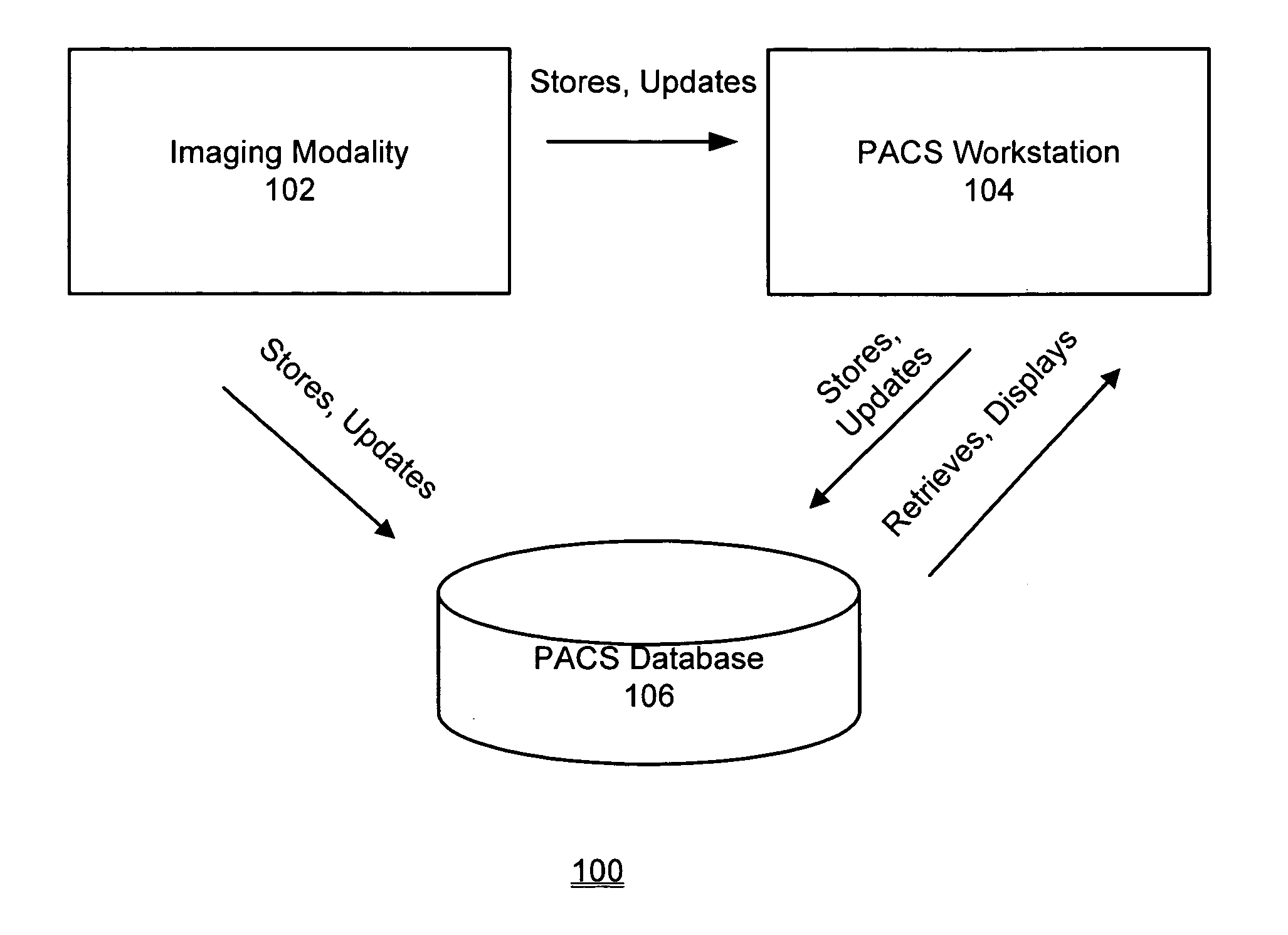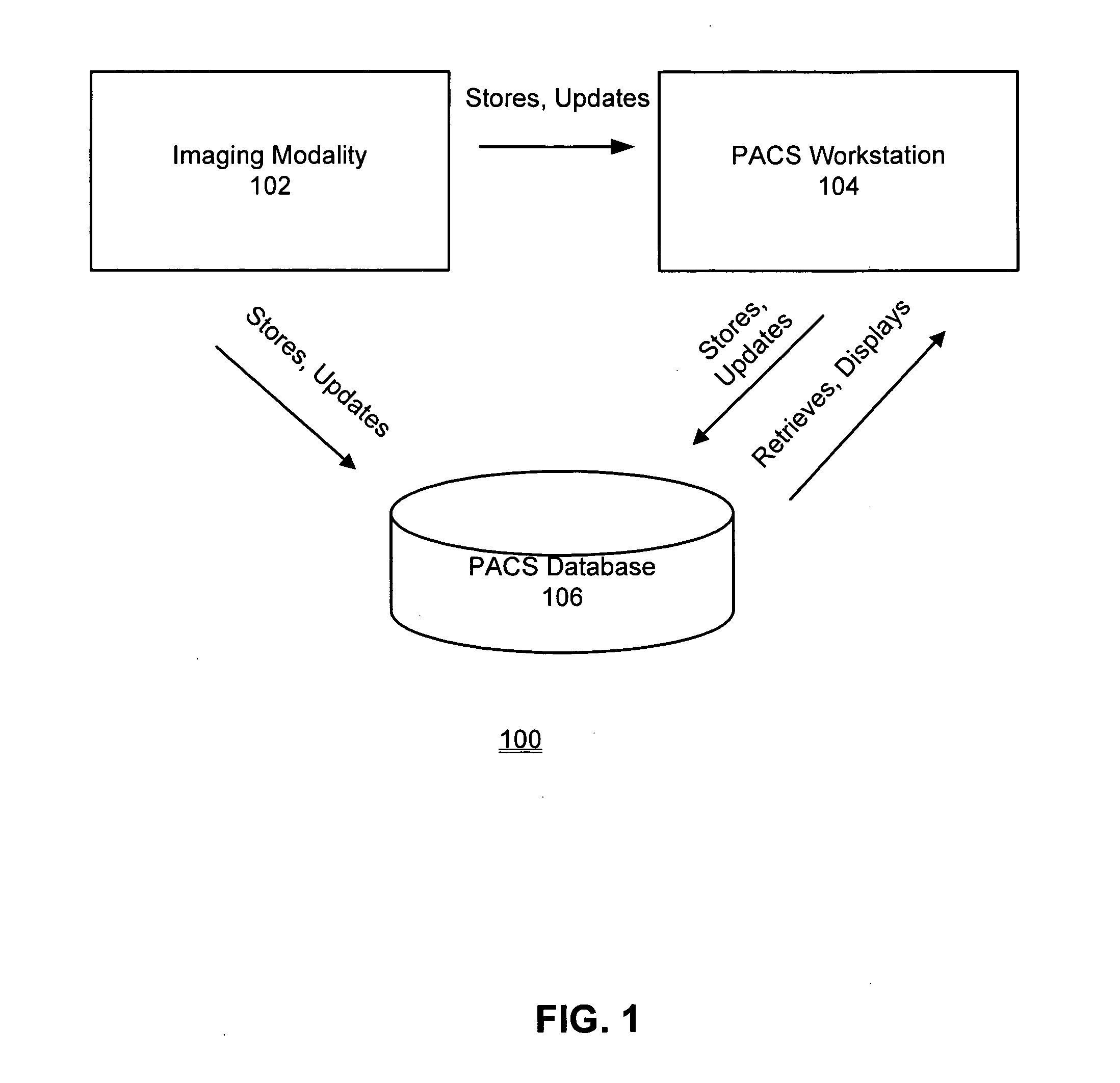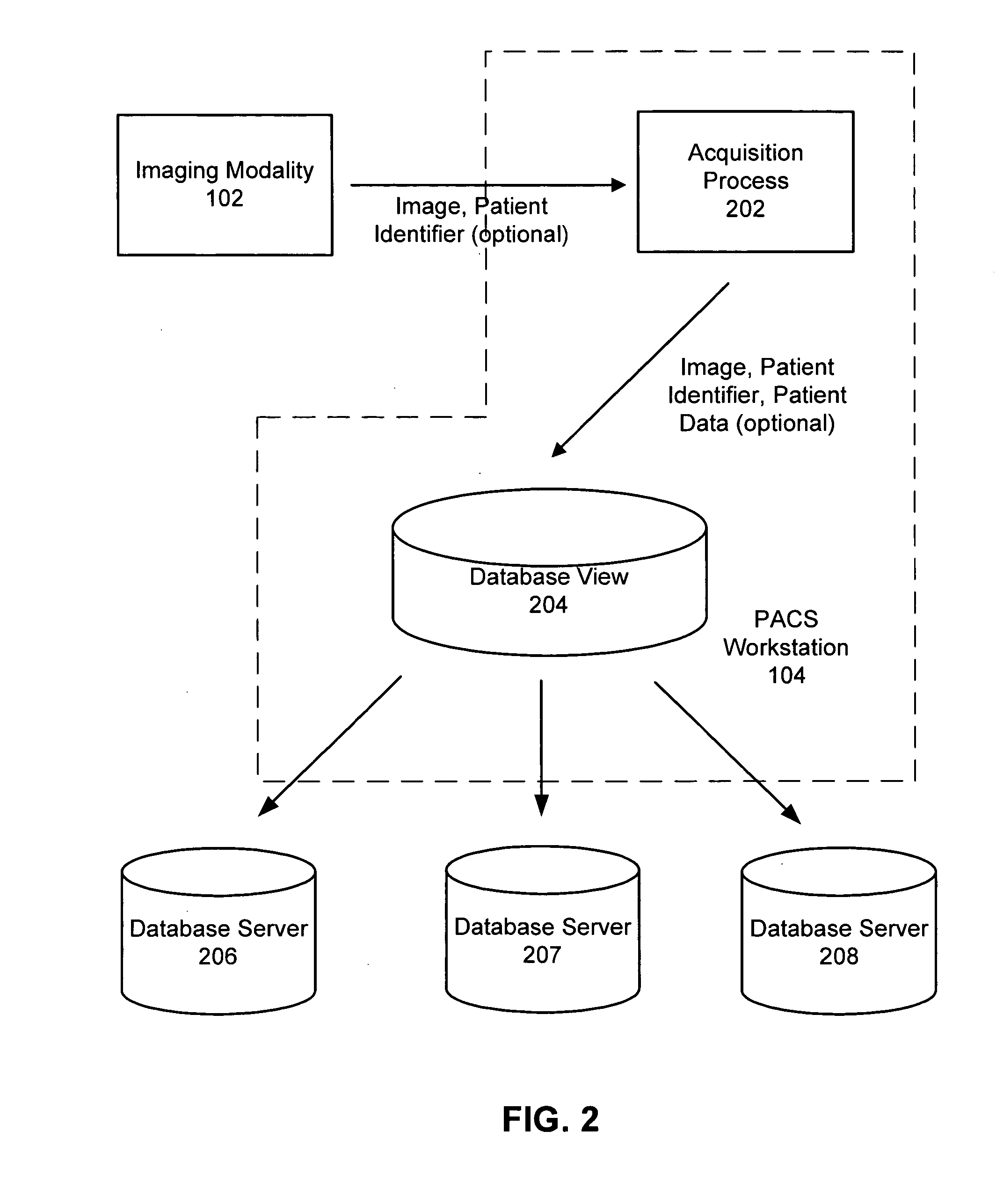Transactional storage and workflow routing for medical image objects
a technology of image objects and workflows, applied in the field of transfer of medical images and video, can solve the problems of not storing other non-graphical components of a patient's medical record, diagnoses, examination notes, etc., and achieve the effect of facilitating scaling
- Summary
- Abstract
- Description
- Claims
- Application Information
AI Technical Summary
Benefits of technology
Problems solved by technology
Method used
Image
Examples
Embodiment Construction
[0039] The Figures and the following description relate to preferred embodiments of the present invention by way of illustration only. It should be noted that from the following discussion, alternative embodiments of the structures and methods disclosed herein will be readily recognized as viable alternatives that may be employed without departing from the principles of the claimed invention.
[0040] The present invention includes a system and method for providing medical image management in a PACS. In preferred embodiments, full auditing is provided with 2-phase commit processing using relational database storage for medical objects. Horizontal replication is employed to partition information. The system allows for incremental backups of blocks changed, as opposed to requiring file system backups. The system implements version imaging; provides authentication support, rights management, geographically distributed deployment, encryption and access control; supports WADO, XDS and trad...
PUM
 Login to View More
Login to View More Abstract
Description
Claims
Application Information
 Login to View More
Login to View More - R&D
- Intellectual Property
- Life Sciences
- Materials
- Tech Scout
- Unparalleled Data Quality
- Higher Quality Content
- 60% Fewer Hallucinations
Browse by: Latest US Patents, China's latest patents, Technical Efficacy Thesaurus, Application Domain, Technology Topic, Popular Technical Reports.
© 2025 PatSnap. All rights reserved.Legal|Privacy policy|Modern Slavery Act Transparency Statement|Sitemap|About US| Contact US: help@patsnap.com



